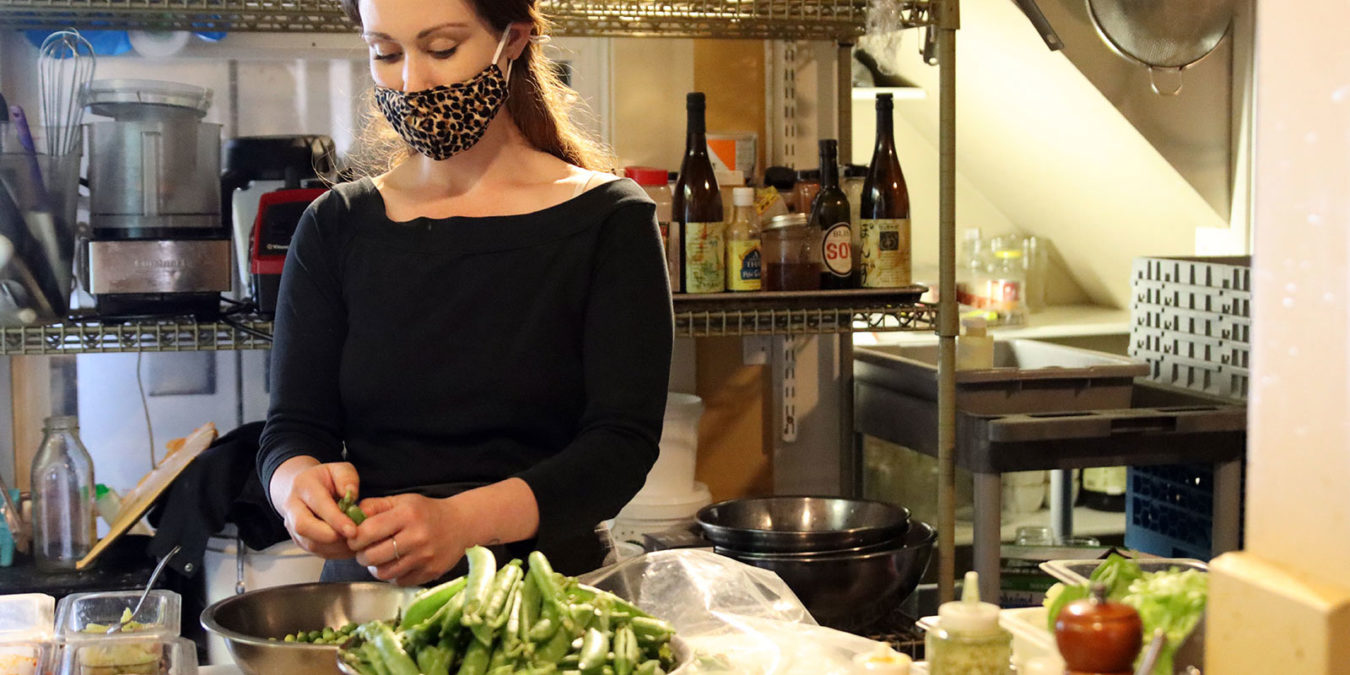For those who love shellfish, the Pacific Northwest is a veritable jackpot. The region is great for producing mussels, clams, and oysters which make a regular appearance on the Coho menu. We buy ours from Jones Family Farm on Lopez Island, Westcott Bay Seafood Farms on San Juan Island and Penn Cove Mussels form Whidbey Island. Another great source is Taylor Shellfish, farmed near Tacoma, south of Seattle and north of Bellingham. This spring, we are showcasing the delicate Manilla clams from Jones Family Farms on Coho’s menu.
It is interesting to compare the flavors of the shellfish from each of the farms that we source, and the differences from each of our weekly batches. They have a gustatory profile ranging from mild and steely to briny with strong characteristics of the sea. It reminds me of “terroir” of wines, or the subtle flavor variation of greens grown in the different soils around the islands – how subtle changes in rainfall and weather affect flavor….the same is true for crustaceans.
All this talk of shell fish makes me hark back to the east coast. In Maryland, we used to scuba dive in the ‘r’ months for oysters in the Chesapeake Bay. Each diver was allowed a harvest up to one bushel. In cold murky water, not more than 15 feet deep, we would spend up to 3 hours or more digging for the treasured bivalves. Our catch was sorted on the boat, and we would get the go-ahead to get back on board when each diver had their maximum allotment. We were no sooner on the boat and out of our gear than the captain had oysters shucked for us to sample. These were the large briny oysters – some six to seven inches in length. They were perfect baked or in oyster stews or chowders. But this brings up an important point: a mussel, clam or oyster is a living creature – you don’t want to buy it from too far away, because they just don’t fare well over long distances. That’s the whole idea of buying locally – things just taste better when they’re harvested locally. A common example of long traveled mussels is the New Zealand Green Lipped; while they’re pretty to look at, their flavor is downright lackluster compared to our local varieties. And while nothing can compare to eating shellfish minutes after they’ve been harvested, buying them from only a few miles away will certainly make a difference in your appreciation of them.
When shopping for mussels, besides seeking out locally farmed product, look for those that are closed and damp looking, though not sitting in a pool of water; avoid dried-out looking mussels – they should be fresh and shiny. And a good rule of thumb for all shellfish: anything that doesn’t smell faintly like the ocean should be avoided. Keep them refrigerated in a colander, covered with ice or a damp towel. Don’t store them in water or in an airtight container – you’ll only kill the critters. Of course, to retain that fresh, tender flavor, you’ll want to cook them as soon as possible.
For news on what’s happening at our Inns or on the Island, go to Tucker House Inn, Harrison House Suites, and Experience San Juan Island


